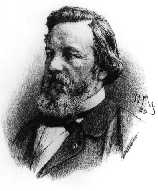In sports training many tests are used for testing and monitoring the status of athletes. From simple field testing with measuring tape and stopwatch, to hi-tech scientific tests.
One simple test that is not commonly used, and as far as I am concerned underestimated, is the simple reaction time test. Yes, the good old reaction time test.
You know the test that measures the time between a stimulus, often an acoustic (a beep) or a visual one ( e.g a simple graph appearing on a computer screen) and a simple motor task (e.g. pushing a button).
One of the first scientific works about reaction time was done by Donders, a Dutch physiologist, back in 1869.

Donders did some important work, he noticed that there is a difference between a single reaction time (SRT), one stimulus and one response, e.g. push the button as soon as you see the figure on the screen appear, and choice reaction time (CRT), e.g. push the right button if the figure appears on the right side of the screen and the left button if that figure appears on the left side of the screen.
Donders measured that the CRT takes more time than the SRT, just because the brain needs more time to process the information and make a choice (left or right). One can also create more choices like: left, middle and right, or: left above, left below, right above and right below. The rule is: the more choices, the longer the reaction time. The decision making time is CRT minus SRT.
Research also showed us that reaction time has a good correlation with surprising parameters like general IQ as it shows the overall speed of information processing.
But there is also a correlation with life span: the faster your reaction time, the longer the life span. This makes a lot of sense from an evolutionary point of view. A lot of times your survival depends on how fast you react. In former days for example, your response to a snake in the grass or seeing a tiger approach and climbing a tree; nowadays the car in front of you braking while you’re driving at a high speed on the highway. Or when you get older, crossing a busy street or the speed of your reflexes when you stumble.
It looks as if the reaction time test has been forgotten mainly because it simplicity it isn’t a very “sexy” test and does not need hi-tech equipment.
I use reaction time a lot to test the “tonus” of the central nervous system, or to improve reaction time in sports where this factor plays an important role. But also to find the “speed-accuracy trade off”, which means the balance between a fast reaction on the one hand and an accurate reaction on the other. E.g. a reaction too early or too late or in case of the CRT, reacting to the wrong side. Very competitive athletes and thrill seekers will try to beat the test by responding too early by anticipating the beep in order to get a faster time, but at the expense of errors.
The test can also be used to train focus or attention. If my reaction time is 150-160-155-150 milliseconds, then why would the next one be 300 milliseconds as often happens? This basically happens because the mind, for a very brief time span, is not paying attention to the beep, but wandering to something or somewhere else.
Also concentration over a longer time span can be measured. If over 50 beeps the reaction time of the first 10 beeps is 150 milliseconds and over the last 10 beeps is 180 milliseconds (i.e. 30 milliseconds slower), a decline in concentration has occurred.
Reaction time gives us in a fast and easy way a general insight in how the brain of an individual works.
Also with Special Forces I use this method because for them a fast reaction might make the difference between life and death. Then I create noise and distraction to enhance the ability to focus on the task at hand.

We collected a lot of data from athletes, operators and normal people in order to get a better understanding of how their brain works.

It is also possible to train reaction time by biofeedback equipment e.g. with the Procomp of Thought Technology. Now a absolute faster reaction time might be less important than having a stable good reaction time in a specific situation under pressure, like a start from the blocks in the sprint, because that is where it really counts.
Since the use of EEG or MRI to study the brain might not be feasible for most of us coaches, good old reaction time may provide us with valuable insight, more specific for sports.
So dust off the good old reaction timer and start collecting data.
